Kyeongbo Kong
Optimizing 4D Gaussians for Dynamic Scene Video from Single Landscape Images
Apr 04, 2025Abstract:To achieve realistic immersion in landscape images, fluids such as water and clouds need to move within the image while revealing new scenes from various camera perspectives. Recently, a field called dynamic scene video has emerged, which combines single image animation with 3D photography. These methods use pseudo 3D space, implicitly represented with Layered Depth Images (LDIs). LDIs separate a single image into depth-based layers, which enables elements like water and clouds to move within the image while revealing new scenes from different camera perspectives. However, as landscapes typically consist of continuous elements, including fluids, the representation of a 3D space separates a landscape image into discrete layers, and it can lead to diminished depth perception and potential distortions depending on camera movement. Furthermore, due to its implicit modeling of 3D space, the output may be limited to videos in the 2D domain, potentially reducing their versatility. In this paper, we propose representing a complete 3D space for dynamic scene video by modeling explicit representations, specifically 4D Gaussians, from a single image. The framework is focused on optimizing 3D Gaussians by generating multi-view images from a single image and creating 3D motion to optimize 4D Gaussians. The most important part of proposed framework is consistent 3D motion estimation, which estimates common motion among multi-view images to bring the motion in 3D space closer to actual motions. As far as we know, this is the first attempt that considers animation while representing a complete 3D space from a single landscape image. Our model demonstrates the ability to provide realistic immersion in various landscape images through diverse experiments and metrics. Extensive experimental results are https://cvsp-lab.github.io/ICLR2025_3D-MOM/.
AttentionHand: Text-driven Controllable Hand Image Generation for 3D Hand Reconstruction in the Wild
Jul 25, 2024Abstract:Recently, there has been a significant amount of research conducted on 3D hand reconstruction to use various forms of human-computer interaction. However, 3D hand reconstruction in the wild is challenging due to extreme lack of in-the-wild 3D hand datasets. Especially, when hands are in complex pose such as interacting hands, the problems like appearance similarity, self-handed occclusion and depth ambiguity make it more difficult. To overcome these issues, we propose AttentionHand, a novel method for text-driven controllable hand image generation. Since AttentionHand can generate various and numerous in-the-wild hand images well-aligned with 3D hand label, we can acquire a new 3D hand dataset, and can relieve the domain gap between indoor and outdoor scenes. Our method needs easy-to-use four modalities (i.e, an RGB image, a hand mesh image from 3D label, a bounding box, and a text prompt). These modalities are embedded into the latent space by the encoding phase. Then, through the text attention stage, hand-related tokens from the given text prompt are attended to highlight hand-related regions of the latent embedding. After the highlighted embedding is fed to the visual attention stage, hand-related regions in the embedding are attended by conditioning global and local hand mesh images with the diffusion-based pipeline. In the decoding phase, the final feature is decoded to new hand images, which are well-aligned with the given hand mesh image and text prompt. As a result, AttentionHand achieved state-of-the-art among text-to-hand image generation models, and the performance of 3D hand mesh reconstruction was improved by additionally training with hand images generated by AttentionHand.
Embedding-Free Transformer with Inference Spatial Reduction for Efficient Semantic Segmentation
Jul 24, 2024Abstract:We present an Encoder-Decoder Attention Transformer, EDAFormer, which consists of the Embedding-Free Transformer (EFT) encoder and the all-attention decoder leveraging our Embedding-Free Attention (EFA) structure. The proposed EFA is a novel global context modeling mechanism that focuses on functioning the global non-linearity, not the specific roles of the query, key and value. For the decoder, we explore the optimized structure for considering the globality, which can improve the semantic segmentation performance. In addition, we propose a novel Inference Spatial Reduction (ISR) method for the computational efficiency. Different from the previous spatial reduction attention methods, our ISR method further reduces the key-value resolution at the inference phase, which can mitigate the computation-performance trade-off gap for the efficient semantic segmentation. Our EDAFormer shows the state-of-the-art performance with the efficient computation compared to the existing transformer-based semantic segmentation models in three public benchmarks, including ADE20K, Cityscapes and COCO-Stuff. Furthermore, our ISR method reduces the computational cost by up to 61% with minimal mIoU performance degradation on Cityscapes dataset. The code is available at https://github.com/hyunwoo137/EDAFormer.
AnoSeg: Anomaly Segmentation Network Using Self-Supervised Learning
Oct 07, 2021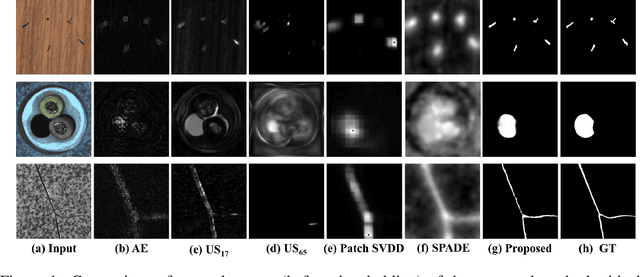
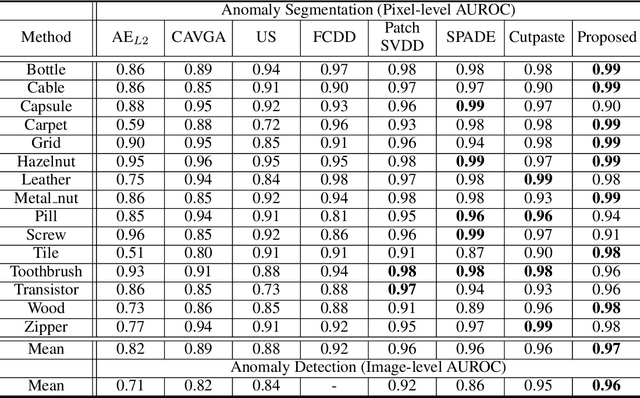


Abstract:Anomaly segmentation, which localizes defective areas, is an important component in large-scale industrial manufacturing. However, most recent researches have focused on anomaly detection. This paper proposes a novel anomaly segmentation network (AnoSeg) that can directly generate an accurate anomaly map using self-supervised learning. For highly accurate anomaly segmentation, the proposed AnoSeg considers three novel techniques: Anomaly data generation based on hard augmentation, self-supervised learning with pixel-wise and adversarial losses, and coordinate channel concatenation. First, to generate synthetic anomaly images and reference masks for normal data, the proposed method uses hard augmentation to change the normal sample distribution. Then, the proposed AnoSeg is trained in a self-supervised learning manner from the synthetic anomaly data and normal data. Finally, the coordinate channel, which represents the pixel location information, is concatenated to an input of AnoSeg to consider the positional relationship of each pixel in the image. The estimated anomaly map can also be utilized to improve the performance of anomaly detection. Our experiments show that the proposed method outperforms the state-of-the-art anomaly detection and anomaly segmentation methods for the MVTec AD dataset. In addition, we compared the proposed method with the existing methods through the intersection over union (IoU) metric commonly used in segmentation tasks and demonstrated the superiority of our method for anomaly segmentation.
Mitigating Memorization in Sample Selection for Learning with Noisy Labels
Jul 08, 2021



Abstract:Because deep learning is vulnerable to noisy labels, sample selection techniques, which train networks with only clean labeled data, have attracted a great attention. However, if the labels are dominantly corrupted by few classes, these noisy samples are called dominant-noisy-labeled samples, the network also learns dominant-noisy-labeled samples rapidly via content-aware optimization. In this study, we propose a compelling criteria to penalize dominant-noisy-labeled samples intensively through class-wise penalty labels. By averaging prediction confidences for the each observed label, we obtain suitable penalty labels that have high values if the labels are largely corrupted by some classes. Experiments were performed using benchmarks (CIFAR-10, CIFAR-100, Tiny-ImageNet) and real-world datasets (ANIMAL-10N, Clothing1M) to evaluate the proposed criteria in various scenarios with different noise rates. Using the proposed sample selection, the learning process of the network becomes significantly robust to noisy labels compared to existing methods in several noise types.
Core-set Sampling for Efficient Neural Architecture Search
Jul 08, 2021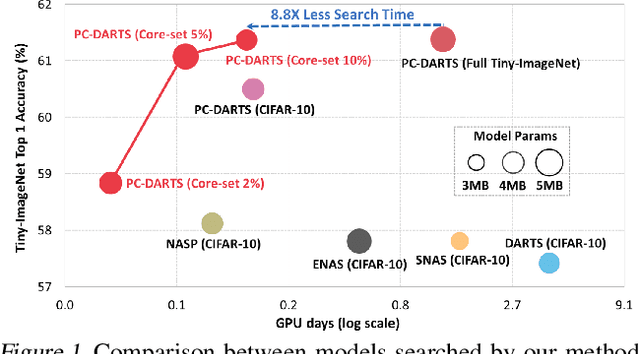

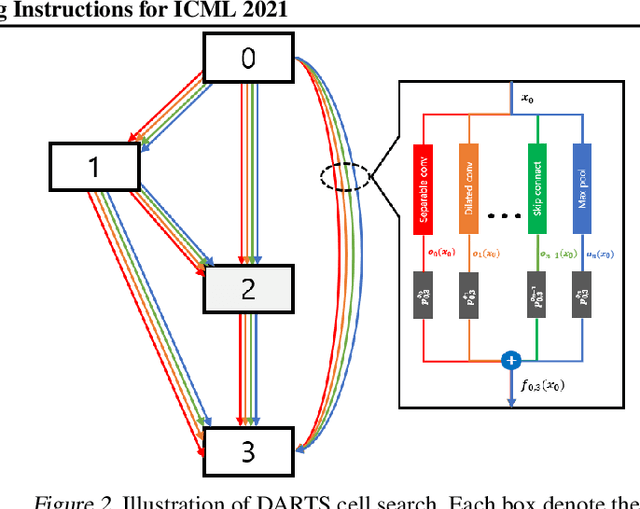

Abstract:Neural architecture search (NAS), an important branch of automatic machine learning, has become an effective approach to automate the design of deep learning models. However, the major issue in NAS is how to reduce the large search time imposed by the heavy computational burden. While most recent approaches focus on pruning redundant sets or developing new search methodologies, this paper attempts to formulate the problem based on the data curation manner. Our key strategy is to search the architecture using summarized data distribution, i.e., core-set. Typically, many NAS algorithms separate searching and training stages, and the proposed core-set methodology is only used in search stage, thus their performance degradation can be minimized. In our experiments, we were able to save overall computational time from 30.8 hours to 3.5 hours, 8.8x reduction, on a single RTX 3090 GPU without sacrificing accuracy.
Selective Focusing Learning in Conditional GANs
Jul 08, 2021
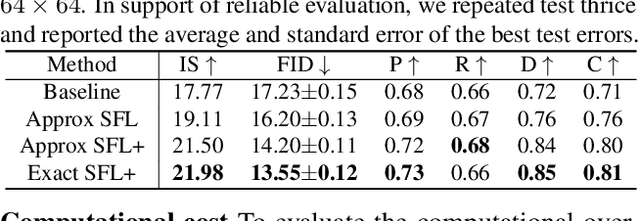
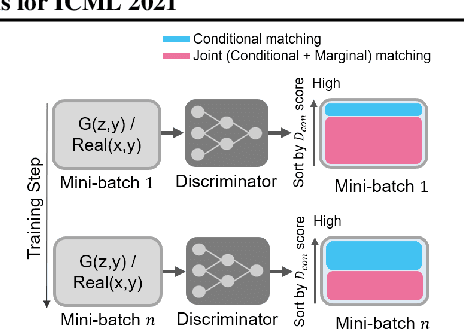

Abstract:Conditional generative adversarial networks (cGANs) have demonstrated remarkable success due to their class-wise controllability and superior quality for complex generation tasks. Typical cGANs solve the joint distribution matching problem by decomposing two easier sub-problems: marginal matching and conditional matching. From our toy experiments, we found that it is the best to apply only conditional matching to certain samples due to the content-aware optimization of the discriminator. This paper proposes a simple (a few lines of code) but effective training methodology, selective focusing learning, which enforces the discriminator and generator to learn easy samples of each class rapidly while maintaining diversity. Our key idea is to selectively apply conditional and joint matching for the data in each mini-batch. We conducted experiments on recent cGAN variants in ImageNet (64x64 and 128x128), CIFAR-10, and CIFAR-100 datasets, and improved the performance significantly (up to 35.18% in terms of FID) without sacrificing diversity.
Attention Map-guided Two-stage Anomaly Detection using Hard Augmentation
Mar 31, 2021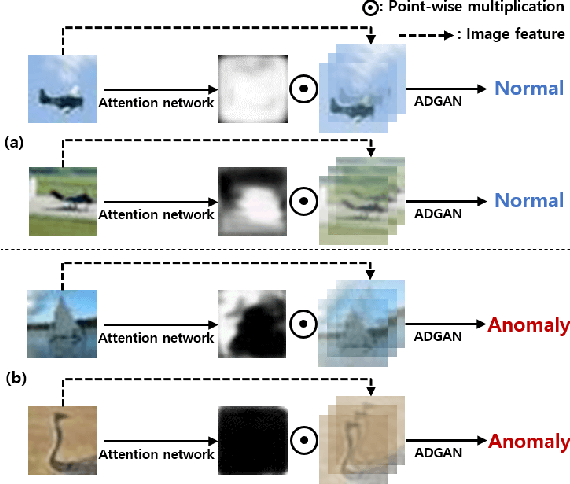
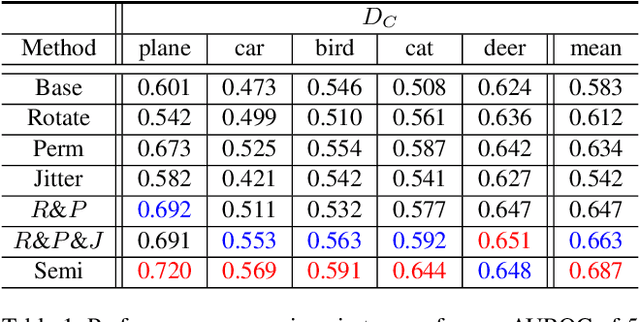
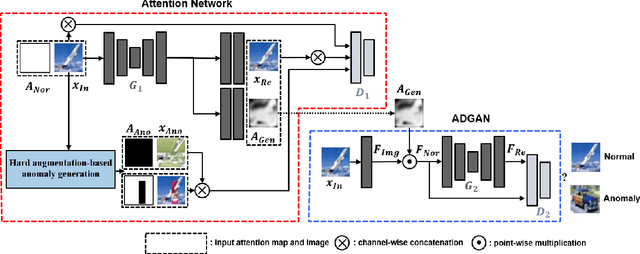

Abstract:Anomaly detection is a task that recognizes whether an input sample is included in the distribution of a target normal class or an anomaly class. Conventional generative adversarial network (GAN)-based methods utilize an entire image including foreground and background as an input. However, in these methods, a useless region unrelated to the normal class (e.g., unrelated background) is learned as normal class distribution, thereby leading to false detection. To alleviate this problem, this paper proposes a novel two-stage network consisting of an attention network and an anomaly detection GAN (ADGAN). The attention network generates an attention map that can indicate the region representing the normal class distribution. To generate an accurate attention map, we propose the attention loss and the adversarial anomaly loss based on synthetic anomaly samples generated from hard augmentation. By applying the attention map to an image feature map, ADGAN learns the normal class distribution from which the useless region is removed, and it is possible to greatly reduce the problem difficulty of the anomaly detection task. Additionally, the estimated attention map can be used for anomaly segmentation because it can distinguish between normal and anomaly regions. As a result, the proposed method outperforms the state-of-the-art anomaly detection and anomaly segmentation methods for widely used datasets.
 Add to Chrome
Add to Chrome Add to Firefox
Add to Firefox Add to Edge
Add to Edge